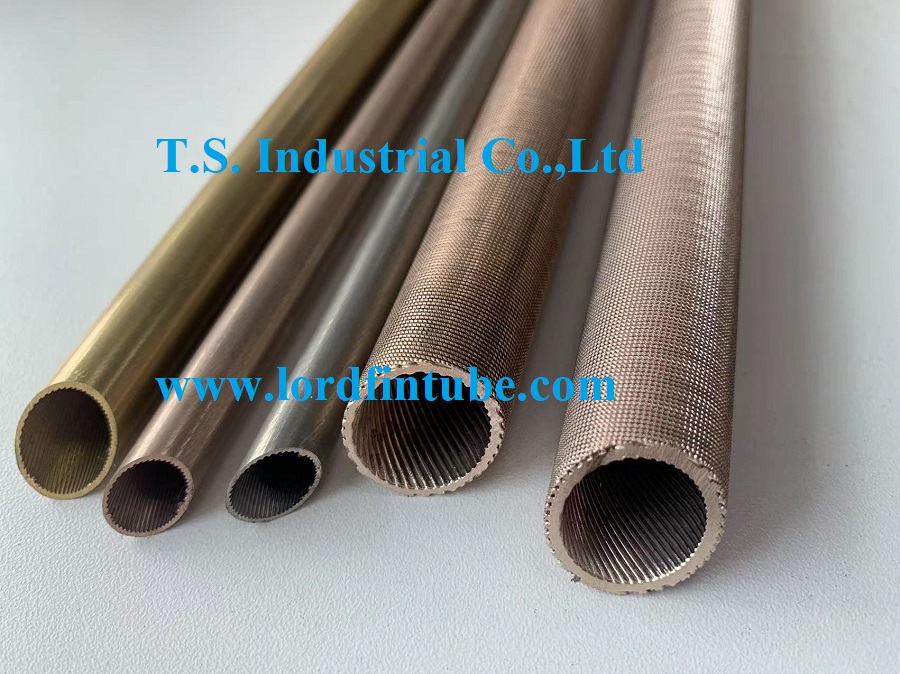The principle and characteristics of T-finned tube
Principle and characteristics of T-finned tube
T-shaped finned tubes fins are rolled out of the wall of the plain tube by use of a pass roller. Tube and fin consist of same piece. T-finned tubes are specialized heat exchanger tubes that have a series of T-shaped fins attached to the outside surface of the tube. These fins increase the surface area of the tube and improve its heat transfer efficiency.
Principles of T-finned tube:
1. Increased Surface Area: The T-fin tube is designed with a T-shaped fin attached to the outside of the tube, which increases the surface area of the tube. This increased surface area allows for more efficient heat transfer between the fluid inside the tube and the environment outside the tube.
2. Enhanced Heat Transfer: The T-fin tube enhances heat transfer by improving the convective heat transfer coefficient. The T-fins break up the laminar flow of fluid, thereby promoting turbulence, which improves heat transfer.
Characteristics of T-finned tube:
1. High Efficiency: T-fin tubes have high heat transfer efficiency due to their increased surface area and enhanced convective heat transfer coefficient. This makes them ideal for use in applications where heat transfer is critical, such as in HVAC systems and power generation plants.
2. Cost-Effective: T-finned tubes are cost-effective because they require less material to manufacture than other types of heat exchangers. Additionally, their increased efficiency means that less energy is needed to achieve the same level of heat transfer as other types of heat exchangers, which results in cost savings over time.
3. Versatile: T-finned tubes can be used in a wide range of applications, including heating and cooling systems, refrigeration systems, and industrial processes. They are suitable for use with a variety of fluids, including water, oil, and gases.
4. Durable: T-finned tubes are made from durable materials, such as copper, aluminum, and stainless steel, which make them resistant to corrosion and erosion. This ensures that they have a long lifespan and require minimal maintenance.
Scope of T-fin tube application:
T-finned tube is applicable to petrochemical, energy and other industrial fields, shell side boiling heat transfer conditions. It is not applicable to the medium with solid dust and easy coking in the shell.
T-finned tube material:
1. T-finned tubes are typically made of copper or copper alloys, such as brass. Copper is often chosen as a material for T-fin tubes due to its excellent thermal conductivity, corrosion resistance, and durability. Copper alloys such as brass are also commonly used because they offer similar thermal conductivity and corrosion resistance properties, while also providing additional strength and hardness. In some cases, T-fin tubes can also be made from other materials such as aluminum, stainless steel, or carbon steel, depending on the specific application and requirements.
2. Aluminum: T-finned tubes made from aluminum are often used in applications where weight is a concern, such as in aerospace and automotive industries.
3. Stainless Steel: T-finned tubes made from stainless steel are often used in high-temperature or corrosive environments, such as in chemical processing or power generation industries.
4. Carbon Steel: T-fin tubes made from carbon steel are often used in industrial applications where high pressure and temperature conditions are present, such as in oil and gas processing plants.
5. Titanium: T-finned tubes made from titanium are often used in applications where high strength, corrosion resistance, and low weight are required, such as in medical implants or aerospace industries.
The selection of material for T-fin tubes depends on factors such as the intended application, operating conditions, and required properties such as thermal conductivity, strength, and corrosion resistance.


